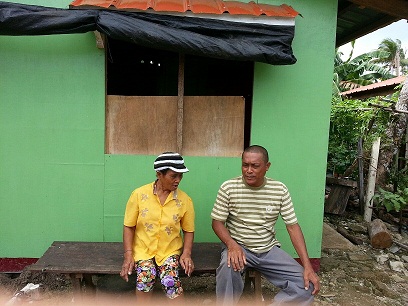By Ellen T. Tordesillas, VERA Files
Manicani today hardly bears signs of the havoc wrought by supertyphoon “Yolanda” (international name: Haiyan) a year ago.
Color is back on this 11.7-square-kilometer island of 3,000 people in Guiuan, Eastern Samar, which was a harrowing picture of destruction only 12 months ago after Yolanda ferociously battered it for straight four hours.

The houses were built by the homeowners themselves, courtesy of the cash for work program of the mining company Nickel Asia Corp. (NAC). Berthed on shore near many homes were new fishing boats, which the islanders requested from NAC officials when asked after Yolanda what they wanted aside from a decent shelter.
A 25- to 30-minute boat ride from Guiuan, Manicani during World War II was a United States Navy naval repair facility. It’s primarily a fishing community today.